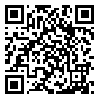Sun, Dec 28, 2025
[Archive]
Volume 11, Issue 1 (1-2021)
Iran J Ped Hematol Oncol 2021, 11(1): 11-17 |
Back to browse issues page
Download citation:
BibTeX | RIS | EndNote | Medlars | ProCite | Reference Manager | RefWorks
Send citation to:



BibTeX | RIS | EndNote | Medlars | ProCite | Reference Manager | RefWorks
Send citation to:
Aung W, Htwe T N, Thandar M, Mar O. Serum zinc status in thalassemic adolescents attending Yangon Children Hospital, Myanmar. Iran J Ped Hematol Oncol 2021; 11 (1) :11-17
URL: http://ijpho.ssu.ac.ir/article-1-540-en.html
URL: http://ijpho.ssu.ac.ir/article-1-540-en.html
Department of Physiology, University of Medicine-1, Kamayut Township, 11014, Yangon, Myanmar.
Abstract: (1785 Views)
Background: Thalassemia constitutes a major public health problem causing a significant burden on children and their families. Zinc deficiency plays an important role in many thalassemia-related complications like growth retardation, hypogonadism and delayed puberty which are frequently noted in adolescent age. Although zinc is supplemented to thalassemic patients visiting Day Care Center, Yangon Children Hospital (YCH), Myanmar, a report concerning serum zinc level of these patients is still lacking. This study, therefore, aimed to assess serum zinc status in thalassemic adolescents attending Day Care Center, YCH.
Materials and Methods: This hospital-based cross-sectional study was conducted on 99 thalassemic adolescents. Mean age of diagnosis was 5.1±2.1 years. Non-fasting serum zinc concentration was determined by atomic absorption spectrophotometry. According to National Health and Nutrition Examination Survey data, zinc deficiency was defined as serum zinc concentration < 66 μg/dL (female) and < 70 μg/dL (male).
Results: Serum zinc concentration (μg/dL) was 57.35 (47.30-80.14) (median, interquartile range) with maximum, 195.05 and minimum, 28.83. Zinc deficiency was observed in 69.7% (69 out of 99; 35 males and 34 females) of the patients. The associations of zinc deficiency with gender, phenotype and the use of chelator were non-significant (P>0.05).
Conclusion: In spite of zinc supplementation, nearly 70% of the thalassemic adolescents showed zinc deficiency. Zinc deficiency in these adolescents might not be related to gender, phenotypes or the use of chelator. Poor compliance to take zinc supplementation and/or irregular blood transfusion could partly be attributable to zinc deficiency in these adolescents. Providing health education on the importance of regular intake of adequate zinc is advisable and periodic evaluation of zinc levels is recommended for thalassemic adolescents.
Materials and Methods: This hospital-based cross-sectional study was conducted on 99 thalassemic adolescents. Mean age of diagnosis was 5.1±2.1 years. Non-fasting serum zinc concentration was determined by atomic absorption spectrophotometry. According to National Health and Nutrition Examination Survey data, zinc deficiency was defined as serum zinc concentration < 66 μg/dL (female) and < 70 μg/dL (male).
Results: Serum zinc concentration (μg/dL) was 57.35 (47.30-80.14) (median, interquartile range) with maximum, 195.05 and minimum, 28.83. Zinc deficiency was observed in 69.7% (69 out of 99; 35 males and 34 females) of the patients. The associations of zinc deficiency with gender, phenotype and the use of chelator were non-significant (P>0.05).
Conclusion: In spite of zinc supplementation, nearly 70% of the thalassemic adolescents showed zinc deficiency. Zinc deficiency in these adolescents might not be related to gender, phenotypes or the use of chelator. Poor compliance to take zinc supplementation and/or irregular blood transfusion could partly be attributable to zinc deficiency in these adolescents. Providing health education on the importance of regular intake of adequate zinc is advisable and periodic evaluation of zinc levels is recommended for thalassemic adolescents.
Type of Study: Research |
Subject:
General
Received: 2020/05/12 | Accepted: 2020/09/30 | Published: 2020/12/20
Received: 2020/05/12 | Accepted: 2020/09/30 | Published: 2020/12/20
Send email to the article author
| Rights and permissions | |
 |
This work is licensed under a Creative Commons Attribution-NonCommercial 4.0 International License. |





